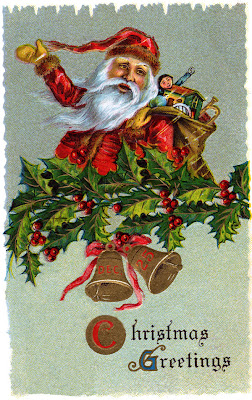What a wonderful image, no?
We couldn't help but to include an image from the wonderful picture book, Wipe Your Feet, Santa Claus, illustrated by the excellent Polish artist, Jozef Wilkon.
Yes, we know, there's no Santa Claus in this picture, but what the heck, it's such a lovely image of a child sleeping on Christmas Eve, dreaming about the forest he lives in, the forest literally entering his dream and his dream transporting him to deep into the forest. What a wonderful image showing the influence the forest has on the European winter tradition of Christmas.
I'm particularly fond of some of the details within the image, like the wide eyed owl perched high above the scene, looking down on the nocturnal activity below. The bear sitting human-like at the foot of the child's bed is a charming, humorous element.
I'm particularly fond of some of the details within the image, like the wide eyed owl perched high above the scene, looking down on the nocturnal activity below. The bear sitting human-like at the foot of the child's bed is a charming, humorous element.







